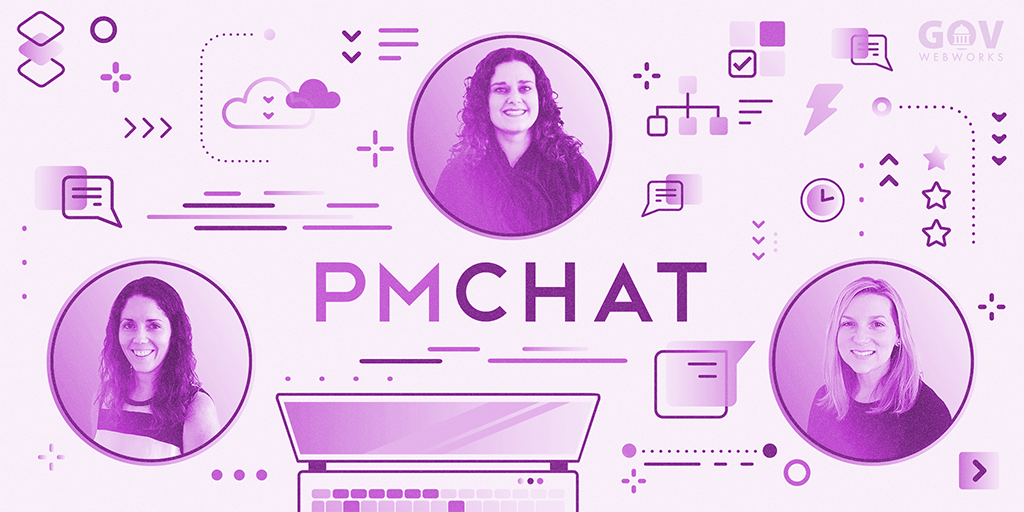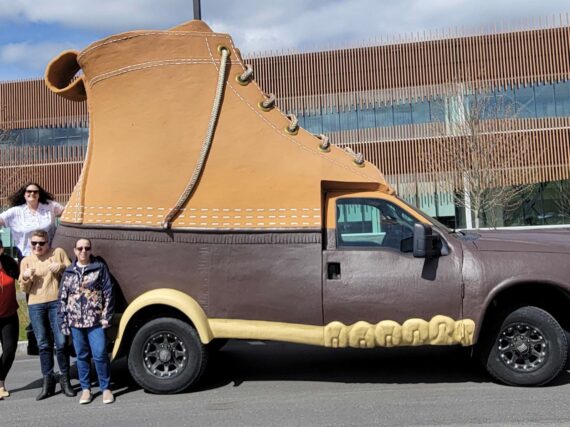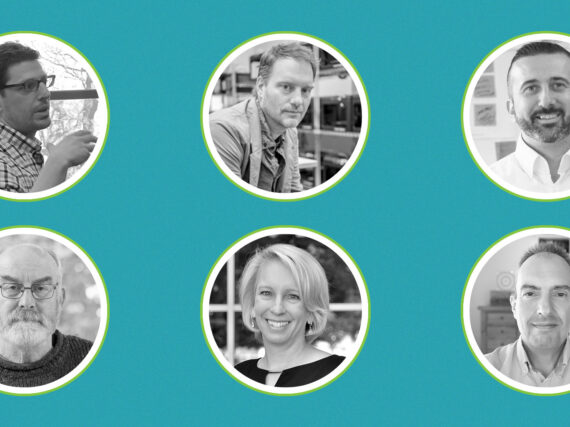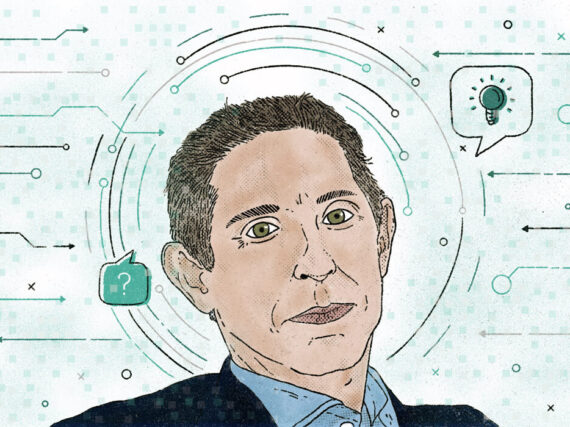In light of DigitalGov’s post on Experiments in Tweaking Agile for UX, we spoke with GovWebworks project managers (PMs) Alison Schestopol, Sarah Crossman, and Hellen Fitzpatrick on the topic. They discussed the ways they incorporate design and user experience (UX) into a project, and into the agile project management process.
First of all, how would you describe your project management styles?
Alison Schestopol: For the most part, I follow agile principles, but I don’t like forcing clients into a specific way of doing things. It’s more about figuring out the client’s knowledge and appetite for agile, as well as project management principles, so I’m not too heavy handed or too hands off. Iteration, collaboration, and delivering value are key in any project.
I tend to err on the side of over communication with clients to make sure that they’re aware of everything going on. This also helps them see that the project is progressing, but I’m always mindful that working with our team is not their full time job. My goal is to deliver the right information, at the right time, and in the right format.
Sarah Crossman: Yes, timing is key. I like to be right in the midst of the team, even though I may be the least technical person at the table. I try to use that to my and the project’s benefit by making developers explain things in layman’s terms.
Once I feel comfortable that the developers and architects are on the same page with me and the client, I can then let them have conversations about technical approach and considerations and not interject for explanations.
Hellen Fitzpatrick: Right, I also try to learn about the subject as quickly as possible so I can have knowledgeable discussions with developers, and communicate the vision that the client has for the scope of work.
With the clients I see it as a give-and-take in project management. You form relationships with clients and get to know them. This builds trust so that when I have to deliver good news or bad news, they can better understand where I’m coming from.
What projects are you currently managing?
Alison: We’re building an iOS and Android mobile app for the Iowa Department of Education (IDOE). It helps child care centers and at-home daycares enrolled in the Child and Adult Care Food Program (CACFP) get reimbursed for creditable food purchases.
Sarah: We just launched a new public-facing website for the Missouri Department of Transportation (MoDOT), which involved migration from their legacy site to a new Drupal 8 content management system with enhanced functionality and admin tools.
Hellen: We’re maintaining and updating Idaho’s Employment and Training System (ETS). In this case, it was already in place and well-established when I took over as PM.
What’s been your process for integrating design and UX on these projects?
Sarah: With MoDOT, we followed what we call a “phased design approach,” in which we do intensive design and discovery during a dedicated phase, and that essentially closes the period dedicated to design. The client wanted to have design deliverables in hand at the end of this phase that would not change during implementation unless there was a dire need. It worked well to open the doors to input and involvement from a broad set of stakeholders during the design phase. When that phase concluded the design was considered final and the implementation began. This is one way to manage the varied requests of a large group of stakeholders.
Hellen: Since ETS functionality was already in place when I took it over, we’ve been incrementally adding features on a rolling release schedule. This fits well with what we call a “rolling design approach.”
As we iterate on design and UX we need to reflect on what already exists, reuse what we can and modify where we need to. At the same time, we must ensure the whole application looks and acts consistently as we learn more and build more. Otherwise you have an application with segmented work that doesn’t align across the releases.
I find Idaho understands that with a rolling approach to design there’s some change with the UX as we go. Things we build on day one might be built and displayed differently in six months when we understand a lot more about how that particular element is used. It requires some mutual diligence to dedicate time to correct those things.
Alison: In the case of IDOE, we had an intensive discovery and design phase to create the wireframes and visual design first so the developers could go in and make rapid progress setting up the MVP (minimum viable product) for the app.
Later on we circled back to the UX team to add extra features and functionality. So it’s a blend of phased design and rolling design, in that we try to get the main things ironed out and ready to go, then figure out the details or smaller features along the way.
How do you manage design approvals?
Alison: There’s never usually one person responsible, but multiple layers of approvals. To manage this, we use a design review tool called InVision. Clients can share the links with team members and everyone can comment directly on the design. This makes it easy for multiple people to look at it at the same time.
You can get all of the feedback at once and incorporate it faster. If there’s anything that conflicts or doesn’t make sense, that drives a conversation with the project point of contact to make a decision. So even though it is design by committee, it’s collaborative and we are able to move ahead with the UX testing and incorporate any changes later on without much rework.
Sarah: InVision has been a great tool. The designers can make the design interactive by linking buttons, showing the hover and click behavior of a menu, and other things like that.
Hellen: Agreed. It’s really an effective tool compared to a flat wireframe where you have to imagine what the experience will be like.
What are your goals for incorporating design and UX into sprint work?
Alison: Right now UX sits outside of the sprint development process. It’s because we often need the UX team to work ahead of development. But it would be great to have them estimate what they’re getting done in sprints.
Even if just one story at a time, it’s ideal to have the UX team manage their work within project sprints. We could carve out UX work that we document as a user story and add points and include that as part of the burn down. It would be worth testing out and seeing if it’s a total dead end or if it’s a mind shift that we need to undertake.
Sarah: I agree, I think there are some opportunities to have a more integrated approach where the sprint commitment includes both development and UX deliverables.
We could use sprint meetings as a way of incorporating UX conversations into scrum. Currently, UX topics may come up in passing in standups and team retrospectives. It would be interesting to see if we could fully incorporate UX into the cadence of the development sprint.
We may find UX work is better planned if it is written into user stories, pointed (sized), and prioritized. Other people besides us are thinking about it and there’s some knowledge sharing happening. At the UXPA Boston Conference last year there were several sessions on incorporating UX and design into agile software development.
NOTE: See the UX Chat for more on UX research and testing. As UX team member Amy Mauriello says, user stories should “reinforce a user-centered design approach so the tasks to develop the product will accommodate the users.”
How do you deal with negative design feedback?
Alison: I try not to take things personally, and keep my mind open to feedback. If there’s a shortcoming, it’s important not to get defensive, and be welcoming of someone else’s point of view.
We care about our customers and customer satisfaction is the number one goal for us. We want our clients to be happy and to use our software and say good things about us. Not taking things personally as a PM helps build the trust and mutual respect that are needed for successful projects.
Sarah: To add to that, when I’m feeling challenged managing the project through a difficult period, I try to remember that software development might be our day-to-day routine, but for the client contact it’s a major project that they may only do once or twice over the course of their career. It may also have a lot of scrutiny from people high up in the organization, and a huge number of public visitors.
My point is that it’s usually an important undertaking for the client that they don’t do every day. Having patience when a client has a hard time understanding the process can go a long way to establishing a good relationship.
Hellen: Yeah, all we can do is deal with feedback with grace. For me, it comes down to ownership. There’s an underlying desire to want to succeed at the things you touch, so you do your best with whatever happens.
Author bios
Meet Alison, Sarah, and Hellen on the team page of Portland Webworks, GovWebworks’ parent company.
Join our team
We are always seeking talented project managers and user experience professionals for our growing client base. We have a great benefits package and annual profit share averaging 16 percent of base salary. Located in Portland, Maine’s charming Old Port, employees enjoy in-house yoga, Friday happy hour, and other great perks.
See our Careers Page for current openings.
Learn more
- Check out our Facebook and LinkedIn pages
- View our MailChimp-style 2017-by-the-Numbers report on company stats and figures
- Feel free to contact us with any questions!







